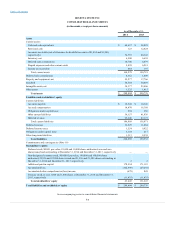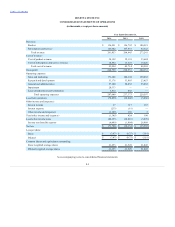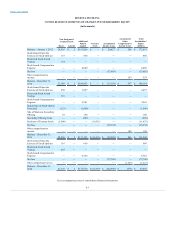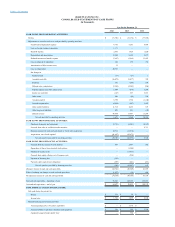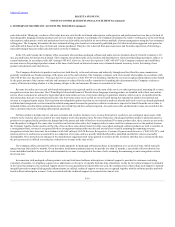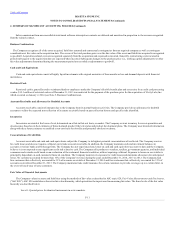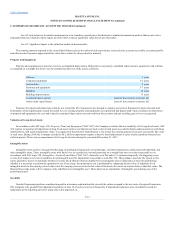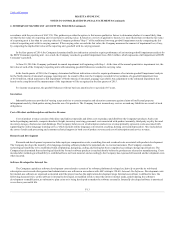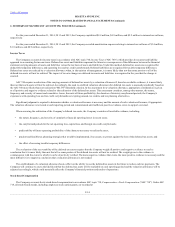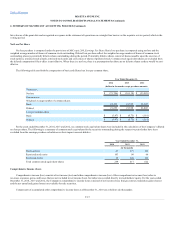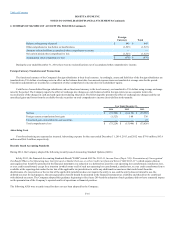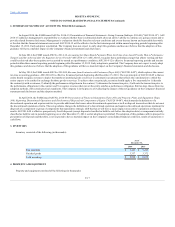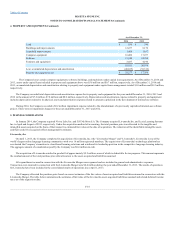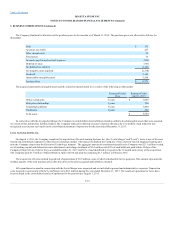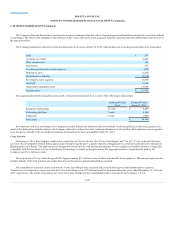Rosetta Stone 2014 Annual Report Download - page 70
Download and view the complete annual report
Please find page 70 of the 2014 Rosetta Stone annual report below. You can navigate through the pages in the report by either clicking on the pages listed below, or by using the keyword search tool below to find specific information within the annual report.
Table of Contents
accordance with the provisions of ASC 350. This guidance provides the option to first assess qualitative factors to determine whether it is more likely than
not that the fair value of a reporting unit is less than its carrying value. If, based on a review of qualitative factors, it is more likely than not that the fair value
of a reporting unit is less than its carrying value the Company performs "Step 1" of the traditional two-step goodwill impairment test by comparing the fair
value of a reporting unit with its carrying amount. If the carrying value exceeds the fair value, the Company measures the amount of impairment loss, if any,
by comparing the implied fair value of the reporting unit goodwill with its carrying amount.
In the first quarter of 2014, the Company determined sufficient indication existed to require performance of an interim goodwill impairment analysis for
the ROW Consumer reporting unit. As a result, the Company recorded a goodwill impairment loss of$2.2 million, which represents a full impairment of ROW
Consumer’s goodwill.
At June 30, 2014 the Company performed its annual impairment test beginning with Step 1. At the time of the annual quantitative impairment test, the
fair value of each of the Company's reporting units with remaining goodwill balances exceeded its carrying value.
In the fourth quarter of 2014, the Company determined sufficient indication existed to require performance of an interim goodwill impairment analysis
for the North America Consumer Language reporting unit. As a result of this test, the Company recorded its best estimate of a goodwill impairment loss
of $18.0 million, which represents a full impairment of North America Consumer Language’s goodwill. Any adjustment to the estimated impairment loss
based on the completion of the measurement of the impairment will be recognized in the first quarter of 2015.
For income tax purposes, the goodwill balances with tax basis are amortized over a period of 15 years.
Indemnifications are provided of varying scope and size to certain enterprise and education customers against claims of intellectual property
infringement made by third parties arising from the use of its products. The Company has not incurred any costs or accrued any liabilities as a result of such
obligations.
Cost of product revenue consists of the direct and indirect materials and labor costs to produce and distribute the Company's products. Such costs
include packaging materials, computer headsets, freight, inventory receiving, personnel costs associated with product assembly, third-party royalty fees and
inventory storage, obsolescence and shrinkage. The Company believes cost of subscription and service revenue primarily represents costs associated with
supporting the online language-learning service, which includes online language conversation coaching, hosting costs and depreciation. Also included are
the costs of credit card processing and customer technical support in both cost of product revenue and cost of subscription and service revenue.
Research and development expenses include employee compensation costs, consulting fees and overhead costs associated with product development.
The Company develops the majority of its language-learning software products for perpetual sale to external customers. The Company considers
technological feasibility to be established when all planning, designing, coding, and testing has been completed according to design specifications. The
Company has determined that technological feasibility for such software products is reached shortly before the products are released to manufacturing. Costs
incurred after technological feasibility is established have not been material, and accordingly, the Company has expensed all research and development costs
when incurred.
The Company capitalizes software development costs related to certain of its software platforms developed exclusively to provide its web-based
subscription services and other general and administrative use software in accordance with ASC subtopic 350-40: . Development costs
for internal-use software are expensed as incurred until the project reaches the application development stage. Internal-use software is defined to have the
following characteristics: (a) the software is internally developed, or modified solely to meet the entity's internal needs, and (b) during the software's
development or modification, no substantive plan exists or is being developed to market the software externally. Internally developed software is amortized
over a three-year useful life.
F-13


